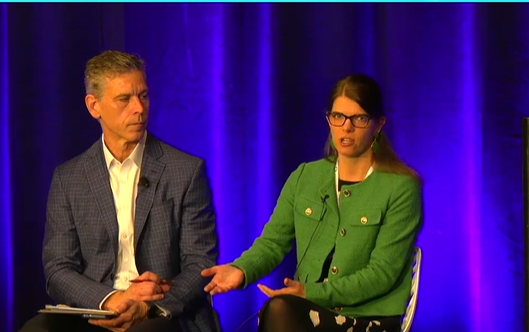2025: Continued chaos at the retail pharmacy level

Smack dab in the middle of the Trade & Channel Strategies conference last month, the Wall Street Journal reported that the Walgreen’s Boots Alliance (WBA) was discussing with private equity firm Sycamore Partners a potential sale that would bring the company private and off of the NASDAQ. While the news remains unconfirmed, industry watchers believe its scheduled January 10 earnings call could shed more light on the situation.
This is just the latest example of the saga that has plagued retail pharmacy—and market access professionals—for the past five years minimum.
Doug Hoey, CEO of the National Community Pharmacists Association (NCPA), said during the “What’s Happening in Retail — Brick and Mortar, Home Delivery and Cash Pay Pharmacies,” panel, "We've seen a net contraction in the retail pharmacy industry of about 15% in the last seven years. That's about 15% fewer pharmacy choices for consumers today than there were in 2017."
Aligning with the closures are the impacts to access strategy, which Bill Roth, senior vice president & managing partner, consulting for Blue Fin, an IntegriChain company, noted in his 2024 year in review and 2025 preview discussion at the conference:
- Closures are creating “pharmacy deserts,” where people are not near a brick and mortar location
- A prescription sent from a PCP to a retail pharmacy has a 10% chance of being filled
- The average retail pharmacy abandonment rate is 50%
Roth said the industry is ripe for innovation in the retail pharmacy space. Hoey more or less concurred during his session, saying, "I think we'll start to see some of those changes come into place, and more transparency in the marketplace, and I think there will be continued opportunities for retail and life science companies to work together."
So, what could innovation look like?
Could it be a return to direct purchase by retail pharmacy from manufacturers suggested? Stephanie Wirkes, head of distribution strategy & execution at Bayer Pharmaceuticals US, told the retail panel audience that she is hearing from retail pharmacy partners who “are a lot more interested going into direct purchases again.” Doug Hoey and Stephanie Wirkes address the audience at the “What’s Happening in Retail — Brick and Mortar, Home Delivery and Cash Pay Pharmacies,” panel
Doug Hoey and Stephanie Wirkes address the audience at the “What’s Happening in Retail — Brick and Mortar, Home Delivery and Cash Pay Pharmacies,” panel
Wirkes also noted that public preferences in receiving any goods, let alone prescription medicines, do favor online models with direct delivery.
For Roth, direct delivery comes in the form of GoodRx or Walmart, which is going the home delivery route, but with twist…delivery within two hours.
For those unwilling to give up on the brick-and-mortar pharmacies, Wirkes added the use of generative AI to improve efficiency in dispensing processes, which could address the staffing and resource issues currently rife at the pharmacy.
What access professionals should also look for in innovative approaches are the digital pharmacies and hubs, manufacturers exploring direct-to-patient delivery options, and answers to the cash pay models.
Wirkes noted the “rise of the combination of a digital pharmacy and digital hub, sometimes in the same company, sometimes separate." These new models aim to streamline the prescription process and improve patient access. She explained, "It really helps retail products from a kind of like hub light... converted into a kind of like retail hub model, not a mandatory hub, but a model that really helps the patient getting access to the product quicker."
Wirkes believes that manufacturers somehow need to be involved in the innovation. “How can we utilize new and innovative models that benefits not only us, but our channel partners and ultimately the patients?"
Learn more about specialty pharmacy and hubs at our upcoming conference.